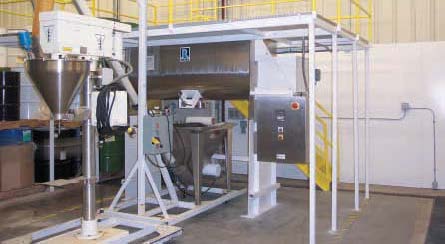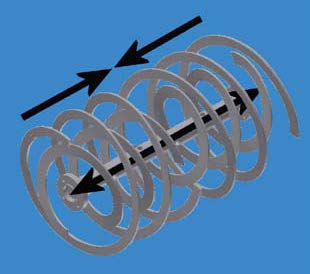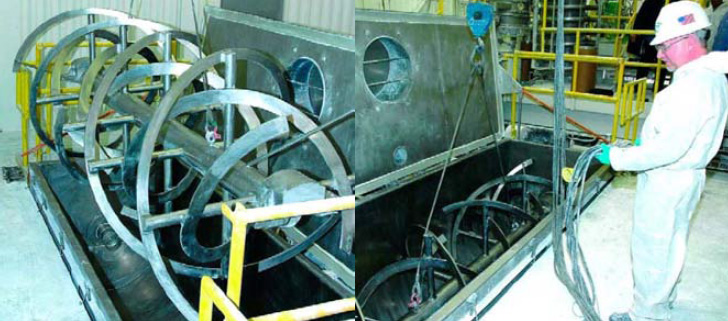Tech Report
Reduce contamination risks in your ribbon blender operation.

Technology Brief
This bulletin discusses ribbon blender features that can reduce cross-contamination risks between batches and improve cleanability. Among the available options is the design for a completely removable agitator which enables high speed product changeover.
Ribbon blenders
Many processes rely on ribbon blenders for reliable, fast and cost-effective mixing. Ribbon blenders are commonly used for dry blends from powdered beverages to polymer pellets, as well as for wet applications such as extruded snack foods and plaster slurries.
Discharge of finished product from the blender is typically done by gravity with assistance from the ribbon agitator. A small quantity of material always remains in the blender since the outer ribbon does not contact the horizontal trough. The blender may be cleaned with a brush, steam, air or water spray. The level and frequency of clean-up varies from one process to another and depends on the various recipes being made on the blender.
Reducing contamination risks in sensitive applications
A well-designed ribbon blender holds close tolerances - in the range of 1/8 to 3/16 in. - between the outer ribbon and the trough to prevent "dead zones" in the batch. The interior stainless-steel surfaces must be well-polished and each weld should be radiused to prevent material buildup. Optional end-plate scrapers may be used for materials that tend to cake or pack into the corners of the trough.
A flush plug discharge valve also reduces stagnant areas in the trough and simplifies cleaning. To prevent intrusion of materials from the surrounding environment, the blender must be sealed. A dust-tight gasketed cover with clamps is generally suitable for atmospheric blending operations. A more heavy-duty cover arrangement is employed for vacuum blending requirements.
Removable ribbon agitator
In most applications, there is no need to remove the ribbon agitator when cleaning. However, for highly sensitive applications, the risk for cross-contamination between batches can be further reduced by utilizing a removable design agitator.
If you foresee the need to occasionally remove the agitator, be sure to discuss this with your blender manufacturer before purchase. Simple customizations can be made, including match marks on the shaft flanges to ensure proper realignment. However, if you anticipate removing the agitator at more frequent intervals, say after every batch, a more elaborate modification will accommodate this requirement. Use of a flat-flange clamshell coupling will allow operators to raise the ribbon agitator out of the blender without moving the end shafts, bearings or seals. This feature adds to the blender cost but can save hours between batches.
How ribbon blenders work

Ribbon blenders consist of a U-shaped horizontal trough and an agitator made up of inner and outer helical ribbons that are pitched to move material axially, in opposing directions, and also radially. This combination promotes fast and thorough blending. Tip speeds in the range of 300 feet/min are typical.
Sample Installation

Ross Ribbon Blender with removable ribbon agitator. The ribbon is hoisted out of the blender using an overhead crane so operators can quickly and easily clean both the ribbon agitator and the trough.
The blender is used for batching different blends of polymer additives with very tight composition specifications. After blending, the additives are further processed into a pellet or other compacted form for shipment to customers.